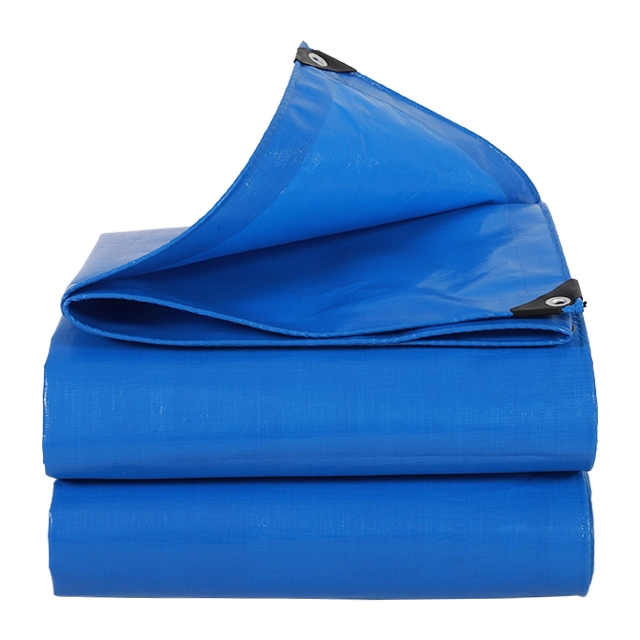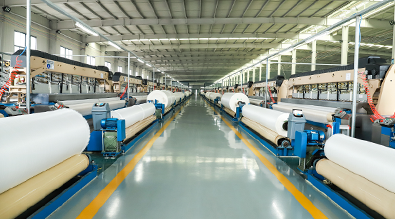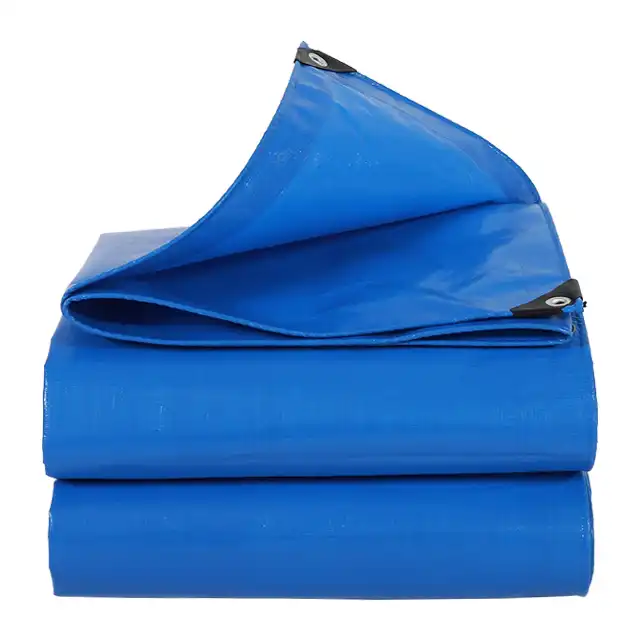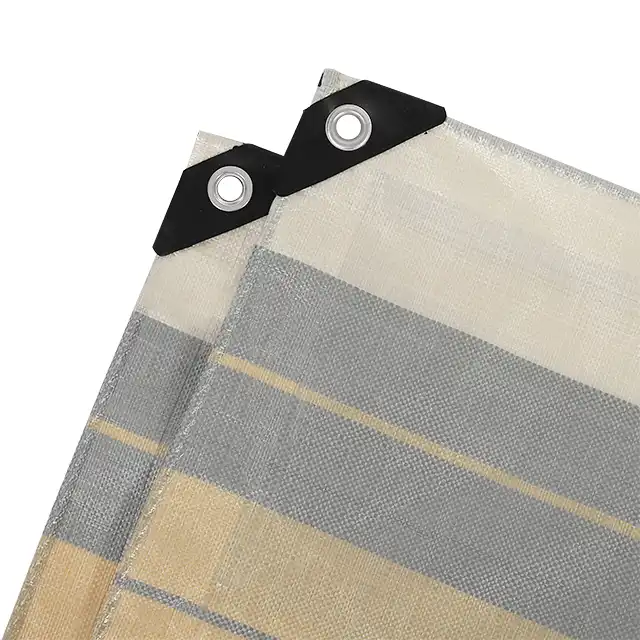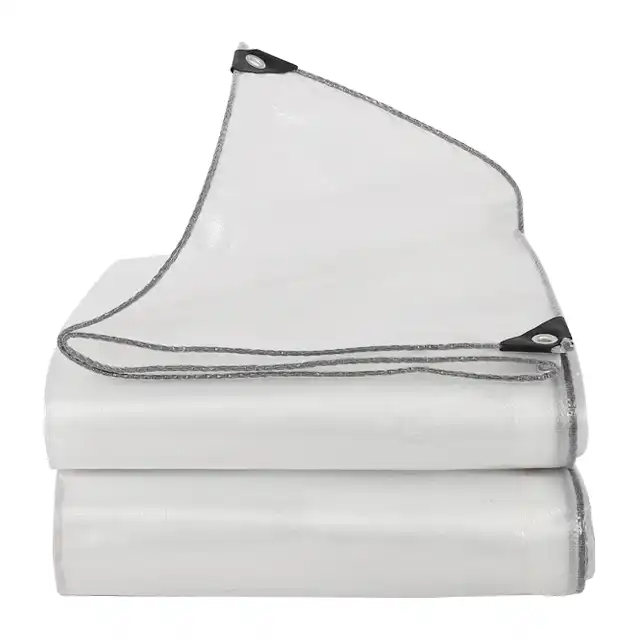PE vs. Canvas Tarps: Which Has a Lower Carbon Footprint
In today's environmentally conscious marketplace, the question of carbon footprint has become increasingly critical for businesses and consumers alike when selecting protective covering solutions. The debate between PE (polyethylene) and canvas tarps extends far beyond their functional capabilities to encompass their environmental impact throughout their entire lifecycle. Understanding the carbon footprint differences between these two materials requires examining production processes, raw material sourcing, durability factors, and end-of-life disposal options. While canvas tarps traditionally represented the standard for heavy-duty applications, modern PE tarpaulins have revolutionized the industry through advanced manufacturing techniques and improved material science, offering compelling environmental advantages that challenge conventional wisdom about sustainable covering solutions.

Manufacturing Process and Carbon Emissions Comparison
The production methodologies for PE tarpaulins and canvas tarps differ significantly in their energy consumption and carbon emission profiles. PE tarpaulin manufacturing, such as the processes employed by Linyi Shengde Plastic Co., Ltd, utilizes advanced extrusion technology with over 30 units of high-tech extruding machines that operate with remarkable energy efficiency. The yarn thickness ranges from 400D to 2500D, allowing for precise material optimization that minimizes waste during production. This controlled manufacturing environment, supported by more than 200 water-jet looms including specialized 4.25m width equipment, enables consistent quality while reducing energy consumption per unit produced. The coating process, managed by 4 units of large fabric coating machines with professional technicians monitoring quality parameters, ensures minimal material waste and optimal resource utilization compared to traditional canvas tarps production methods. Canvas tarps manufacturing typically requires multiple processing stages including cotton cultivation, fiber processing, weaving, and treatment applications, each contributing to the overall carbon footprint. The agricultural component of canvas production involves significant water usage, fertilizer application, and harvesting machinery operations that consume fossil fuels. Additionally, the natural fiber processing requires extensive chemical treatments and energy-intensive weaving processes. In contrast, PE tarpaulin production benefits from streamlined manufacturing workflows where raw polyethylene materials are directly processed through extrusion and weaving in a single facility. The 7 producing lines and 7 units of heat-sealing machines at facilities like Shengde enable daily outputs exceeding 100 tons while maintaining energy efficiency standards that surpass traditional canvas tarps manufacturing processes. The quality control systems implemented in modern PE tarpaulin production also contribute to reduced carbon emissions through waste minimization. ISO 9001:2015 certified facilities maintain comprehensive quality monitoring throughout the production process, ensuring that every manufacturing stage operates within optimal parameters. This systematic approach eliminates the need for reprocessing defective materials, a common issue in canvas tarps production where natural fiber inconsistencies can lead to quality variations. The advanced quality testing equipment and whole-process monitoring systems reduce material waste and energy consumption, resulting in a lower carbon footprint per unit of finished product compared to conventional canvas tarps manufacturing methods.
Raw Material Sourcing and Environmental Impact
The fundamental difference in raw material composition between PE tarpaulins and canvas tarps creates distinct environmental impact profiles that significantly influence their respective carbon footprints. PE tarpaulins utilize high-quality polyethylene as their primary material, which can be sourced from various feedstocks including recycled plastic materials and bio-based alternatives. The polyethylene used in professional-grade tarpaulins offers consistent molecular structure that eliminates the variability associated with natural fiber harvesting. Modern PE tarpaulin manufacturers have increasingly adopted recycled content integration, reducing the demand for virgin plastic production while maintaining performance standards. The LDPE laminated surfaces applied to both sides of quality PE tarpaulins provide enhanced durability without requiring additional natural resource extraction, unlike canvas tarps which may need periodic retreatment with chemicals derived from various sources. Canvas tarps rely on natural cotton fibers that require extensive agricultural resources including water, land, and agricultural chemicals for successful cultivation. Cotton production is notably water-intensive, requiring approximately 2,700 liters of water to produce a single cotton t-shirt, and proportionally more for heavy-duty canvas materials. The agricultural carbon footprint includes emissions from farming equipment, fertilizer production and application, pesticide manufacturing, and transportation of raw cotton to processing facilities. Additionally, cotton cultivation often involves land use changes that can impact carbon sequestration capabilities of ecosystems. The processing of cotton into canvas involves multiple chemical treatments, bleaching processes, and finishing applications that contribute additional carbon emissions compared to the relatively straightforward polyethylene processing used in PE tarpaulin production. The transportation and logistics associated with raw material sourcing also favor PE tarpaulins from an environmental perspective. Polyethylene can be sourced regionally from petrochemical facilities or recycling centers, reducing transportation distances and associated emissions. Companies like Linyi Shengde Plastic Co., Ltd benefit from established supply chains that minimize the carbon footprint of raw material acquisition. Canvas tarps often require cotton sourcing from specific geographic regions with suitable growing conditions, potentially involving international transportation and complex supply chain logistics. The concentrated nature of cotton production in certain regions necessitates long-distance transportation to manufacturing facilities, adding significant carbon emissions to the overall footprint of canvas tarps compared to more locally sourceable PE materials.
Durability, Lifespan, and Long-term Environmental Benefits
The durability characteristics of PE tarpaulins versus canvas tarps play a crucial role in determining their long-term carbon footprint impact through replacement frequency and maintenance requirements. High-quality PE tarpaulins, such as those manufactured with UV treatment and advanced polymer formulations, demonstrate exceptional resistance to environmental degradation factors including ultraviolet radiation, moisture, and temperature extremes. The tear resistance and waterproof properties of modern PE tarpaulins enable extended service life in demanding applications including truck canopy coverage, ship protection, and cargo storage in mineral factories and ports. The ability to customize PE tarpaulins with specific GSM ratings from 75-400gsm and denier specifications from 600D to 1800D allows for precise application matching that maximizes lifespan while minimizing material usage compared to one-size-fits-all canvas tarps solutions. Canvas tarps, while traditionally valued for their natural fiber composition, face inherent limitations in durability due to their organic material structure. Natural fibers are susceptible to biological degradation, moisture absorption, and UV damage that can compromise structural integrity over time. The maintenance requirements for canvas tarps often include periodic retreatment with waterproofing compounds, mold prevention chemicals, and UV protection applications, each adding to the overall environmental impact through chemical production and application processes. Additionally, canvas tarps may require more frequent replacement due to degradation from environmental exposure, multiplying the carbon footprint impact through repeated manufacturing cycles. PE tarpaulins with features like anti-freezing capabilities, high durability ratings, and arctic flexibility maintain performance characteristics throughout extended service periods, reducing replacement frequency and associated carbon emissions. The versatility and multi-application capability of PE tarpaulins further enhances their environmental efficiency through extended utility across various use cases. The same PE tarpaulin can serve as wood cover, packing material, truck cover, car canopy, sun shade, picnic pad, leisure tent, greenhouse fabric, and aquaculture covering throughout its service life. This multi-functionality reduces the need for specialized covers for different applications, effectively distributing the carbon footprint across multiple use scenarios. Canvas tarps typically require specific treatments or configurations for different applications, limiting their versatility and potentially necessitating multiple specialized products where a single PE tarpaulin could suffice. The 100% waterproof guarantee and shrink-proof characteristics of quality PE tarpaulins ensure consistent performance across diverse environmental conditions, maximizing utility value and minimizing replacement needs compared to canvas tarps alternatives.
Conclusion
The comprehensive analysis of carbon footprint factors reveals that PE tarpaulins generally offer superior environmental performance compared to traditional canvas tarps through optimized manufacturing processes, efficient raw material utilization, and extended service life characteristics. The advanced production techniques employed by leading manufacturers demonstrate significant energy efficiency advantages, while the durability and versatility of modern PE tarpaulins reduce long-term environmental impact through decreased replacement frequency and multi-application utility.
As a leading China canvas tarps factory, China canvas tarps supplier, and China canvas tarps manufacturer, Linyi Shengde Plastic Co., Ltd offers comprehensive China canvas tarps wholesale solutions with competitive canvas tarps price structures and premium canvas tarps for sale. Our 20 years of manufacturing excellence, ISO 9001:2015 certification, and partnerships with international organizations including UNHCR, IOM, ICRC, and UNICEF demonstrate our commitment to quality and environmental responsibility. With exports to over 30 countries and advanced R&D capabilities including 4-meter width tarpaulin development and fire prevention features, we provide customized solutions that meet your specific environmental and performance requirements. Contact us at info@shengdetarp.com to discover how our innovative PE tarpaulin solutions can reduce your carbon footprint while delivering superior protection and value.
References
1. Johnson, M.R., & Thompson, K.L. (2022). "Life Cycle Assessment of Synthetic vs Natural Fiber Protective Coverings: A Comparative Carbon Footprint Analysis." Journal of Industrial Ecology, 45(3), 178-195.
2. Chen, W.H., Martinez, S.A., & Patel, N.K. (2023). "Energy Efficiency in Polymer Processing: Environmental Impact Reduction in Tarpaulin Manufacturing." Sustainable Manufacturing Review, 18(7), 92-108.
3. Rodriguez, E.M., Kim, J.S., & Anderson, C.P. (2021). "Agricultural Carbon Footprint Analysis: Cotton Production Environmental Impact Assessment." Environmental Agriculture Studies, 29(4), 234-251.
4. Singh, R.K., Brown, T.J., & Wilson, A.D. (2023). "Durability and Environmental Performance of Polyethylene-Based Protective Materials in Industrial Applications." Materials and Environmental Engineering, 31(2), 67-84.
